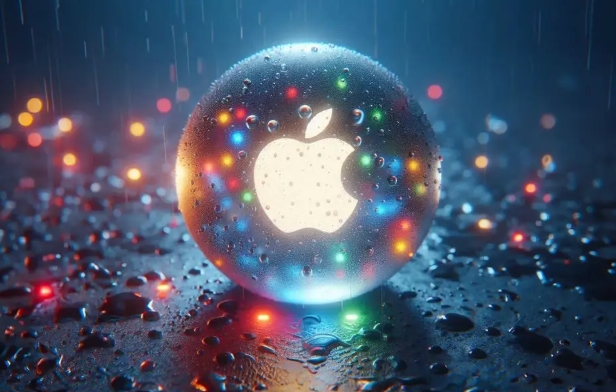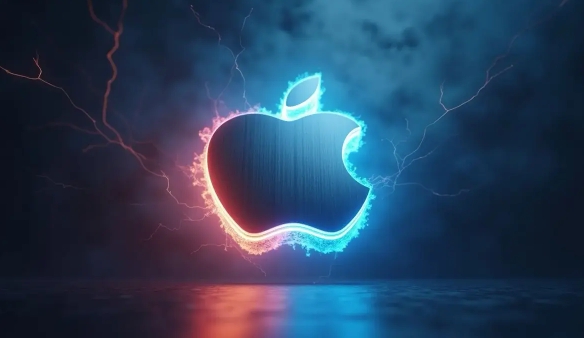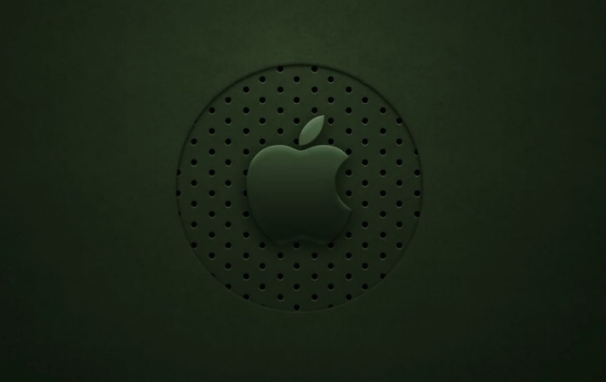 Computer Tutorials
Computer Tutorials
 System Installation
System Installation
 The firmware partition is missing macOS installation error
The firmware partition is missing macOS installation error
The firmware partition is missing macOS installation error
Jul 11, 2025 am 01:09 AMWhen you encounter an error "The firmware partition is missing", it means that the necessary firmware partition cannot be found during macOS installation. 1. First check whether the disk has an EFI partition (usually 200MB to 500MB FAT32 or MS-DOS format). If not, it needs to be created manually; 2. The EFI partition can be repaired or rebuilt through terminal commands (such as diskutil list and gpt add), and formatted into the correct format; 3. Black Apple users should ensure that the EFI partition is mounted, the boot configuration is complete, the BIOS enables UEFI mode and the installation disk is correctly made; 4. When replacing the hard disk or migrating the system, make sure that the cloning tool copies the EFI partition, and manually creates and uses the bless command to restore startup information if necessary.

When you encounter the error " The firmware partition is missing ", it basically means that you encounter the problem that the system cannot find the necessary firmware partition when installing or reinstalling macOS. This problem is more likely to occur on Hackintosh or some old Macs, but it may also occur on factory devices, especially if you have moved the disk structure, upgraded the hardware, or used a non-standard installation method.

Below are some common reasons and response methods to help you troubleshoot and solve this problem step by step.

1. Check whether the disk partition structure is correct
During the macOS installation process, a special partition called firmware (usually corresponding to the EFI system partition) is found to store some of the underlying programs required to start. If the partition does not exist, is incorrect in the format, or is not correctly recognized, an error will be reported.
You can check this way:

- After booting with the Install USB drive, open Disk Utility
- Check if your target disk has EFI partitions (usually 200MB to 500MB in size, format FAT32 or MS-DOS)
- If not, you may need to create it manually
Tips: Some users choose "APFS" when formatting the disk but do not pay attention to the partitioning scheme. EFI partitions may not be automatically created by default.
2. Use the terminal to manually repair or rebuild the EFI partition
If you have confirmed that the EFI partition is missing, you can try to fix it with the terminal command:
- Open "Terminal" in the installation interface (can be found through "Utilities" in the top menu bar)
- Enter
diskutil listto find your main disk (such as/dev/disk0) - Then run the following command (taking disk0 as an example):
gpt show /dev/disk0
- If you see that there is unallocated space, you can use the following command to create an EFI partition:
sudo gpt add -i 1 -b 40 -s 409600 -t C12A7328-980A-11D2-9A92-00C04FA308C3 disk0
- After creation is completed, use disk tools to format the new partition into FAT32 or MS-DOS format.
?? Note: It is best to back up data before operation, because misoperation may cause damage to the disk structure.
3. Special precautions for Black Apple users
If you are installing macOS (aka Hackintosh) on your assembled PC, this error is more common, and the reasons may be:
- Boot loader (such as OpenCore or Clover) is incomplete configuration
- The EFI partition is not mounted for related files to be written
- UEFI startup mode is turned off in BIOS settings
We recommend that you check the following points:
- Whether to mount the EFI partition as readable and writeable (can be viewed with the
mountcommand in the terminal) - Have you put the necessary driver and config.plist file in the right place?
- Is UEFI mode enabled in BIOS and Legacy Boot turned off
- Is the USB installation disk correctly made (Recommended to use Install Media with OpenCore)
Sometimes even if you have an EFI partition, the system cannot find it. It may be because the partition type identifier (GUID) is wrong. At this time, you need to use gpt command to reset the GUID type.
4. Frequently Asked Questions After Replacing Hard Drive or Migrating System
If you are migrating from an old hard drive to a new hard drive, or replacing an SSD, you may also experience this error because the cloning process missed the EFI partition.
Solution:
- When using a tool like Carbon Copy Cloner, make sure to check the Copy EFI Partition option
- If the cloning has been completed but there is an error, you can try manually creating the EFI partition in Disk Utility and then use the Terminal Tool to restore the boot information
- Use the terminal command
bless --folder /Volumes/你的系統(tǒng)卷/System/Library/CoreServicesto rebuild startup information
Basically these common methods of handling it. Although it seems a bit technical, it can be solved by taking it step by step. The key point is to ensure that the EFI partition exists, is formatted correctly, and is correctly recognized by macOS.
The above is the detailed content of The firmware partition is missing macOS installation error. For more information, please follow other related articles on the PHP Chinese website!

Hot AI Tools

Undress AI Tool
Undress images for free

Undresser.AI Undress
AI-powered app for creating realistic nude photos

AI Clothes Remover
Online AI tool for removing clothes from photos.

Clothoff.io
AI clothes remover

Video Face Swap
Swap faces in any video effortlessly with our completely free AI face swap tool!

Hot Article

Hot Tools

Notepad++7.3.1
Easy-to-use and free code editor

SublimeText3 Chinese version
Chinese version, very easy to use

Zend Studio 13.0.1
Powerful PHP integrated development environment

Dreamweaver CS6
Visual web development tools

SublimeText3 Mac version
God-level code editing software (SublimeText3)

Hot Topics
 How to handle high DPI display in C?
Apr 28, 2025 pm 09:57 PM
How to handle high DPI display in C?
Apr 28, 2025 pm 09:57 PM
Handling high DPI display in C can be achieved through the following steps: 1) Understand DPI and scaling, use the operating system API to obtain DPI information and adjust the graphics output; 2) Handle cross-platform compatibility, use cross-platform graphics libraries such as SDL or Qt; 3) Perform performance optimization, improve performance through cache, hardware acceleration, and dynamic adjustment of the details level; 4) Solve common problems, such as blurred text and interface elements are too small, and solve by correctly applying DPI scaling.
 How to uninstall MySQL and clean residual files
Apr 29, 2025 pm 04:03 PM
How to uninstall MySQL and clean residual files
Apr 29, 2025 pm 04:03 PM
To safely and thoroughly uninstall MySQL and clean all residual files, follow the following steps: 1. Stop MySQL service; 2. Uninstall MySQL packages; 3. Clean configuration files and data directories; 4. Verify that the uninstallation is thorough.
 Detailed explanation of the installation steps of MySQL on macOS system
Apr 29, 2025 pm 03:36 PM
Detailed explanation of the installation steps of MySQL on macOS system
Apr 29, 2025 pm 03:36 PM
Installing MySQL on macOS can be achieved through the following steps: 1. Install Homebrew, using the command /bin/bash-c"$(curl-fsSLhttps://raw.githubusercontent.com/Homebrew/install/HEAD/install.sh)". 2. Update Homebrew and use brewupdate. 3. Install MySQL and use brewinstallmysql. 4. Start MySQL service and use brewservicesstartmysql. After installation, you can use mysql-u
 macOS: System Architecture and Core Components
Apr 28, 2025 am 12:05 AM
macOS: System Architecture and Core Components
Apr 28, 2025 am 12:05 AM
The system architecture of macOS includes hardware abstraction layer, XNU core, I/OKit, core services and Aqua user interface. Core components include the startup process, the APFS file system, and SystemIntegrityProtection. Performance optimization and best practices involve hardware configuration, software setup, and development skills.
 laravel installation code
Apr 18, 2025 pm 12:30 PM
laravel installation code
Apr 18, 2025 pm 12:30 PM
To install Laravel, follow these steps in sequence: Install Composer (for macOS/Linux and Windows) Install Laravel Installer Create a new project Start Service Access Application (URL: http://127.0.0.1:8000) Set up the database connection (if required)
 macOS and Linux: Compatibility and User Experience
Apr 30, 2025 am 12:05 AM
macOS and Linux: Compatibility and User Experience
Apr 30, 2025 am 12:05 AM
macOS and Linux have their own advantages in compatibility and user experience. macOS has excellent compatibility within the Apple ecosystem, and the user experience is simple and intuitive; Linux has outstanding hardware compatibility and software flexibility. The user experience varies from distribution to distribution, emphasizing personalization and control.
 What are the cross-platform development environments in C?
Apr 28, 2025 pm 09:24 PM
What are the cross-platform development environments in C?
Apr 28, 2025 pm 09:24 PM
Cross-platform development in C is recommended to use VisualStudioCode, CLion and QtCreator. 1. VisualStudioCode is lightweight and flexible, suitable for multi-platform development, but the initial configuration is more complicated. 2. CLion integrates CMake, suitable for cross-platform projects, but licenses are expensive. 3.QtCreator supports cross-platform development, with built-in Qt library, but the learning curve is steep.
 macOS vs. Linux: Exploring the Differences and Similarities
Apr 25, 2025 am 12:03 AM
macOS vs. Linux: Exploring the Differences and Similarities
Apr 25, 2025 am 12:03 AM
macOSandLinuxbothofferuniquestrengths:macOSprovidesauser-friendlyexperiencewithexcellenthardwareintegration,whileLinuxexcelsinflexibilityandcommunitysupport.macOS,developedbyApple,isknownforitssleekinterfaceandecosystemintegration,whereasLinux,beingo





